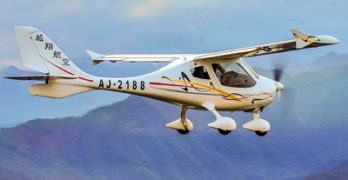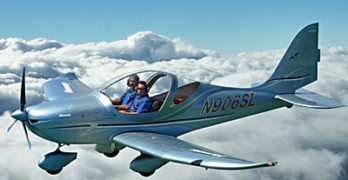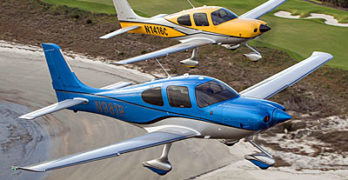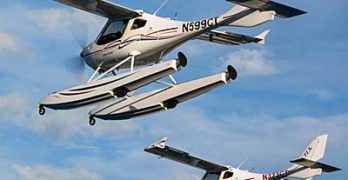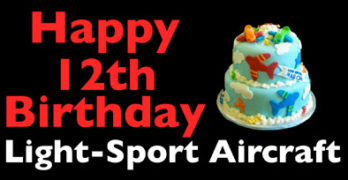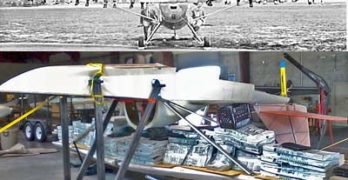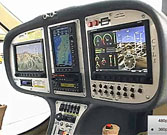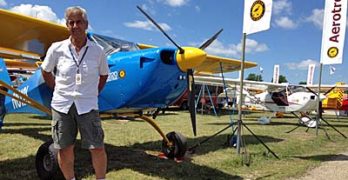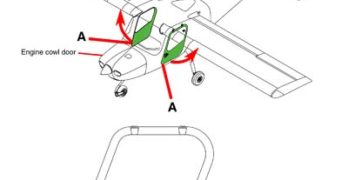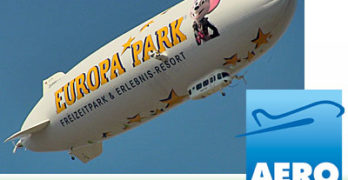AeroJones Aviation builds the very popular CT-series of Light-Sport Aircraft for Asia-Pacific markets. CTLSi is the latest version… a 98% carbon fiber design with superb performance, roomy cockpit, great useful load, and a parachute as standard equipment.
Search Results for : Flight Design
Not finding exactly what you expected? Try our advanced search option.
Select a manufacturer to go straight to all our content about that manufacturer.
Select an aircraft model to go straight to all our content about that model.
VIDEO — Dreams Come True with Harmony
This weekend, let’s watch some video. At airshows (where I seem to spend a lot of time), my video partner Dave and I race around from booth to exhibit and attempt to find new aircraft or products we think may be of interest to our viewers. I’m pleased to tell you that we must do this fairly well measured by a million and a half minutes a month spent watching Dave’s YouTube channel according to Google, which owns the popular video outlet.
In the video below shot at the Mid-West LSA Expo, you hear from Steve Minnich, who operates Dreams Come True, a family-run Evektor dealership in Dayton, Ohio.
Harmony is the evolution of the SportStar, the airplane that launched the Light-Sport Aircraft phenomenon back on April 5th, 2005. Along with Flight Design’s CT, the two were honored at a ceremony at Sun ‘n Fun that year where FAA presented the #1 and #2 aircraft to satisfactorily demonstrate compliance to the ASTM standards.
GA Deliveries Decline Yet Tecnam Performs Well
Every quarter, like clockwork, the General Aviation Manufacturers Association (GAMA), issues its delivery report. I’ve used their data in the past (see HERE) and I appreciate the work they do for the GA producer community. For the past few years, these reports have not exactly been a bright spot, with fairly small numbers of aircraft reported delivered and trends sloping downward.
Thanks to my LAMA associate in Europe, Jan Fridrich, ByDanJohnson.com also reports airplane activity, although Jan and I use FAA registration data modified only by our intimate knowledge of the light aircraft industry. Both GAMA and LAMA must interpret some info as these data sources are more slippery than you might think. For each organization the best info is that which you can distill over years of reporting. If the detail may have potential errors (usually small) the long term trends are more reliable.
I want to give you a small glimpse at GAMA’s numbers for the first nine months of 2016.
AeroJones Shows CTLS at New DeLand Showcase Event
One company making a splash at the brand-new DeLand Sport Aviation Showcase event that opened today was AeroJones, occupying the first two spaces inside the entrance. I’ve written about this company before but since spring a striking change has occurred.
Flight Design — originator of the market-leading CT-series of LSA — has completed a court-appointed reorganization. Many of the former company team members will take certain assets and move forward. I will have more on that in a future article.
After the transaction is fully completed AeroJones Aviation will own the CT line including the current CTLS and CTLSi. They will also pursue completion of Flight Design’s four seater, C4, that flew in 2015.
Introducing the new owner of America’s popular CTLS…
AeroJones Aviation is headquartered in Taichung, Taiwan, often referred to as the “Silicon Valley of Taiwan.” After first acquiring a license to build Flight Design aircraft more than two years ago, the company went through a thorough training and evaluation from Flight Design officials.
Happy 12th Birthday, Light-Sport Aircraft!
Earlier this month, Light-Sport Aircraft celebrated a birthday. The date was September 1st, when FAA made the then-new Sport Pilot/Light-Sport Aircraft rule “effective” (to employ FAA-speak). So… happy birthday, LSA.
In those dozen years — the newest aircraft segment is not even a teenager yet — quite a bit has changed. If you are a parent, you may not notice your child getting older as you see them daily. However, the distant uncle or grandparent who only gets to visit infrequently may be astounded how much the little guy or gal has grown. I suspect those close to LSA may have a similar perspective deficit, so let me make some contrasts.
The nearby images are from a talk I gave at the recently concluded Mid-West LSA Expo. I went into more detail than this article permits but I’ll bet you get the points.
AIRFRAMES — Today, we accept that we have some marvelous, sleek, high-tech, well-equipped, well-performing models.
Torture Testing… Let Freedom Wing!
Most pilots never probably have witnessed the testing a wing endures before designers and regulators will sign off on it, signaling that it has been adequately stressed so that pilots can depend on it. I’ve had the chance to see several such tests and will state that it is two things: demanding and, well …boring (unless something breaks).
Of course, I don’t mean to demean the hard work it takes. Look at the images in this article and you can see that just to set up a wing for testing can involve literally days if not weeks of work. A fixture, sometimes called a “strongbox,” must be built or obtained. An actual wing must be affixed to the structure. Weights in some form — and a lot of them — must be secured to the wing to assure loads are applied in a real simulation; air loads are not uniform across the wing’s span.
Dynon Avionics — SkyView 10-inch
Dynon Avionics has arguably become the largest supplier of LSA avionics in the form of computer screen displays of engine monitoring and flight instruments. At AOPA 2009, they introduced their impressive new SkyView synthetic vision system. In this video at Sebring 2010, we look at one of the first installations of this big-screen setup in the Flight Design CTLS.
Succeeding the Old Fashioned Way: Getting It Right
Media people (like me) flock to airshows looking for the new stories, new airplanes, new avionics, new company developments… whatever is new. Journalists pursue what’s new because they believe that’s what their customers readers want to read (or perhaps because it interests them as a writer). Nevertheless, sometimes the story is what’s not new. Aerotrek, importer of the A240 and A220 has not made major changes to the aircraft.
Why? Simple. The airplanes don’t need to change.*
Aerotrek’s planes are very well built, fly predictably and efficiently, handle nicely and perform near the top of the category at modest operation cost. They are simpler, not fancy carbon fiber, but rely on trusted construction methods using familiar materials. As important as any quality, Aerotreks are modestly priced, affordable to many budgets.
Not breaking new ground means getting familiar ways down pat, honing the building skills and techniques to a fine degree.
Pilots and Manufacturers… Help Rescuers Help You
HYPOTHETICAL SCENARIO — You crash landed your airplane at an airport. You are unconscious inside. Emergency crews race to assist but they are worried about your airplane having a powerful rocket motor that might injure them as they try to extricate you. What do you do? More advisably, what should you have already done?
Plenty of smart aviators and nearly every salesperson will tell you safety doesn’t sell. Pilots buy performance, range, sleek lines, comfort, and the latest instrumentation. Most take for granted that the aircraft is well-built and designed with stable characteristics and reliable systems. No matter their ultimate value, safety systems simply aren’t sexy.
Tell that to Cirrus Design, the Minnesota startup (back in the late ’90s) that did a terrific job of selling “that airplane with the parachute.” Of course, their SR20 and SR22 also steadily acquired all the dazzling features they could incorporate but any Cirrus rep’ is likely to agree the whole airframe parachute system, now called CAPS, was a leading reason why they did so well.
My 4 Favorite Aircraft Seen at Aero 2016
I always love traveling to Aero Friedrichshafen because of the new aircraft I will see. We media types live for the new stuff (because it’s what we believe our readers or video watchers want to consume). I made my last dash through the hall on Saturday — Aero ran from April 20-23, 2016 — and I am now in Zurich, Switzerland awaiting my flight back to the USA.
I saw many aircraft worthy of closer examination. I will prepare articles on those and more detail about the ones below, too. Later on, some of my Aero videos will hit YouTube after some editing. While the memories are fresh, though, I want to give an early peek at four aircraft that grabbed my attention …and that of many others, judging from the challenge to get near them during opening hours. I present these in no particular order.
Zlin Savage Shock — Shock definitely created awe at Aero.
- « Previous Page
- 1
- …
- 17
- 18
- 19
- 20
- 21
- …
- 148
- Next Page »


